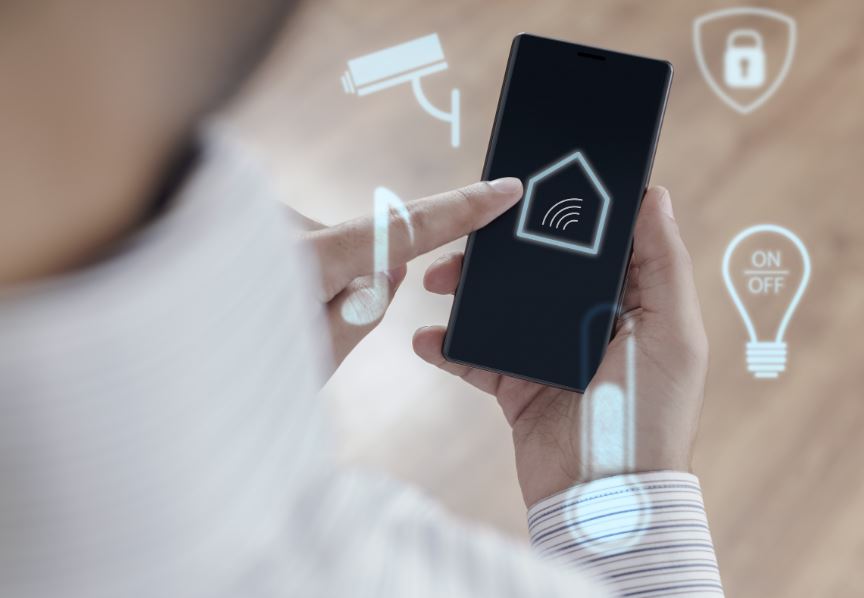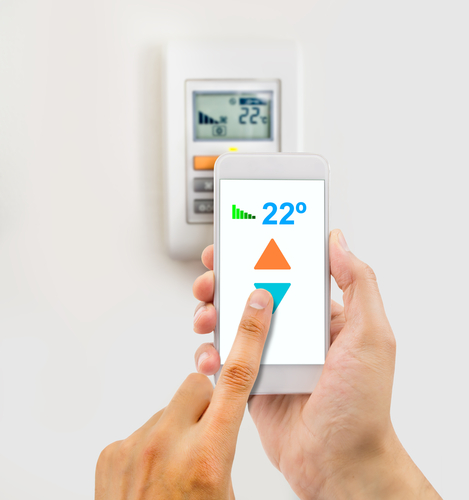Setting Up Your First Smart Home System
Nowadays, up to 70% of American households own at least one smart home system device. These products and devices are seamlessly edging into our lives. They are becoming necessary items that we don’t even have a second thought about using, day in, day out.
It’s all normal and automatic now.
The adaptation to smart home devices and products happened quickly, and it’s still happening.
However, even though smart home automation is becoming more and more mainstream, there’s still a lot of wariness and misunderstanding surrounding this new home technology.
If you are new to the smart home system automation trend and want to transform your abode into a smart home, today’s post is for you. We understand some people’s apprehension in dipping their toes into the smart home trend – especially to the not-so-tech-savvy individuals.
Setting up smart home products and devices can be intimidating for someone who is not into techy stuff. However, it can certainly be done. Many smart home system manufacturers have made the installation and integration of their systems user-friendly.
What Is a Smart Home?
First, let’s discuss what makes a home “smart.” A decade or so ago, the functions and features of the smart home we know today would have just been super-futuristic for the average layman.
Simply put, a smart home is equipped and powered with devices and products that can control certain household activities and tasks. You can remotely monitor and control these devices through your smartphone, tablet, or computer.
Some of these tasks include controlling security cameras, thermostat, lighting, window treatments, entertainment systems, and more.
One of the major benefits of utilizing smart home devices, aside from the comfort and convenience they bring to our day-to-day home lives, is energy efficiency. And as you know, saving energy consequently helps save money.
You can remotely control smart home system products and devices. This can be done through a mobile app on your smartphone or a desktop app on your computer. Many systems also come up with digital assistants – you may have heard of the popular ones such as Alexa and Siri.
Many smart home devices – especially those that come from the same brand and manufacturer – can communicate and integrate with one another. This integration helps in creating one home automation network.
Main Benefits of a Smart Home System
There are numerous benefits to using smart home devices – depending on the product you decide to buy. The main benefits include:
Convenience – you can control your home’s heating and cooling, lighting, security system, and other systems with just a few taps on your smartphone.
Energy and Money Saving – smart home products and devices are engineered to reduce the amount of energy usage.
For instance, smart thermostats can be programmed to turn off when it’s already the right, comfortable temperature inside.
Smart bulbs and lighting can be programmed to turn off when it detects sufficient natural lighting. Smart plugs allow you to keep an eye on your home’s energy usage.
Security – you can have peace of mind knowing that your home and family are safe and protected with advanced and sophisticated residential security systems. You can monitor what’s going on in your home at any time from your phone. This is especially helpful when you are out running errands or on vacation. The system can also send you email and text alerts if something happens.
Getting Started with a Smart Home System
More and more homeowners are inclined to try out the benefits of a smart home. However, there is a vast selection of smart home products and devices on the market today – each one claiming to be the best. It can certainly get overwhelming to shop for a system – especially for a novice to this technological trend.
Set Your Specific Smart Home Needs
Every household is different. Your home life will have its unique traits and needs. As such, the smart home products and devices you decide to buy will need to match these needs.
Just because your friend, family, or neighbor uses a specific product that works for them doesn’t mean it could do the same for you. When shopping for smart devices, think about your daily lifestyle.
For instance, if you work nights, you might want smart lighting systems.
You can program smart lights to give you the amount of lighting you need at specific times throughout the day.
If you have pets, there are smart home products that help with your pets’ comfort.
Do you want to increase your home security? There are smart doorbells, smart locks, and security cameras you can integrate into a smart home security system.
With a multitude of smart home devices available, how do you decide which one to buy?
Choose a smart home system based on your lifestyle needs. The good thing about a smart home is you can build it gradually. This means that you don’t have to shell out money all at once to create a smart home system.
Your Budget Is Essential
It’s easy to get amazed by the many different fantastic features of a smart home system. However, when you set a budget for your smart home system, it would be beneficial if you stick to it. As you think about your smart home needs, decide how much you are willing to spend to match them.
Fortunately, many smart products come at various prices to fit anyone’s budget. Although a smart home sounds futuristic with all its automated and remote features, it’s not expensive to set up.
The initial setup and installation costs, as well as the buying expenses, may seem expensive. However, smart products are engineered for energy efficiency.
Smart plugs keep an eye on your energy consumption. Smart thermostats turn off when you don’t need them. These features can significantly reduce your energy bills – so you are getting long-term savings.
What Is Your Technical Proficiency?
There are smart home technicians you can hire to set everything up for you. That can certainly make your life easier. However, if you don’t have the budget for a contractor, you have no choice but to go the DIY route – unless you know someone who can, quite literally, hook you up.
Figure out what your tech level is before you purchase any smart home device. If your technical proficiency is not that high, you can opt for the basic smart products that are easier to use.
Research, Research, Research
Whenever you want to purchase a product or device, it’s important to do ample research first. This is especially true if it’s a smart device. Once you have determined your budget, figured out your needs and lifestyle, and know your tech proficiency, research the smart devices you want to buy.
Make sure to read customer feedback, professional reviews, and shopping guides. Doing so will help you feel more confident with your purchase.
Check Your Home Internet Capabilities
The more smart home technology you want to incorporate into your house, the faster the internet speed you need.
If you have a poor internet plan, you will constantly experience lags and other connectivity issues with your devices. You will not fully take advantage of the smart devices’ functions and features due to poor internet connection.
Run an internet speed test to know how much speed you are getting. If it’s slower than what you expect to get, get in touch with your internet provider.
Some smart home devices can use up to four or five Mbps of internet bandwidth. If you already have a good internet package, there shouldn’t be any issues with the basic smart products.
If you have a less-than-stellar internet plan, you can use WiFi extenders or internet signal boosters to improve your speed slightly. Alternatively, you could always upgrade your internet plan or choose a different internet provider.
Smart Home System Installation Method
If you are a renter or tenant, you can’t just decide to install a smart home system right away. You have to check your apartment or housing lease first.
If you were given a community handbook, you should review that first as well. There should be a section about the dos and don’ts of any tech installation in your residence.
On top of that, you should reach out to your property manager or landlord to check if they allow hardwiring. For instance, you may not be allowed to switch the existing thermostat to a smart one.
If you are not allowed to hardwire your rental space, don’t worry. Many available smart devices don’t require hardwiring. Most products only need a power outlet to work.
Picking a Digital Assistant
Before you buy any smart devices, you should first decide what smart hub you want to go with. A smart hub is where your smart products and devices will get integrated.
You’ll also need to pick a digital assistant that will carry out the commands you set, such as turning the TV volume up or down, adjusting the thermostat, etc.)
Some of the popular digital assistants available are Alexa, Google Assistant, Siri, and Cortana. While digital assistants’ general function is the same, each of the assistants we mentioned has its own unique features and advantages – depending on what you need.
For instance, if you already mostly have Apple products (iPhone, Mac computer, etc.), you will primarily benefit from Siri as your digital assistant.
 Jarek Ostrowski
Jarek Ostrowski  January 22, 2021
January 22, 2021




